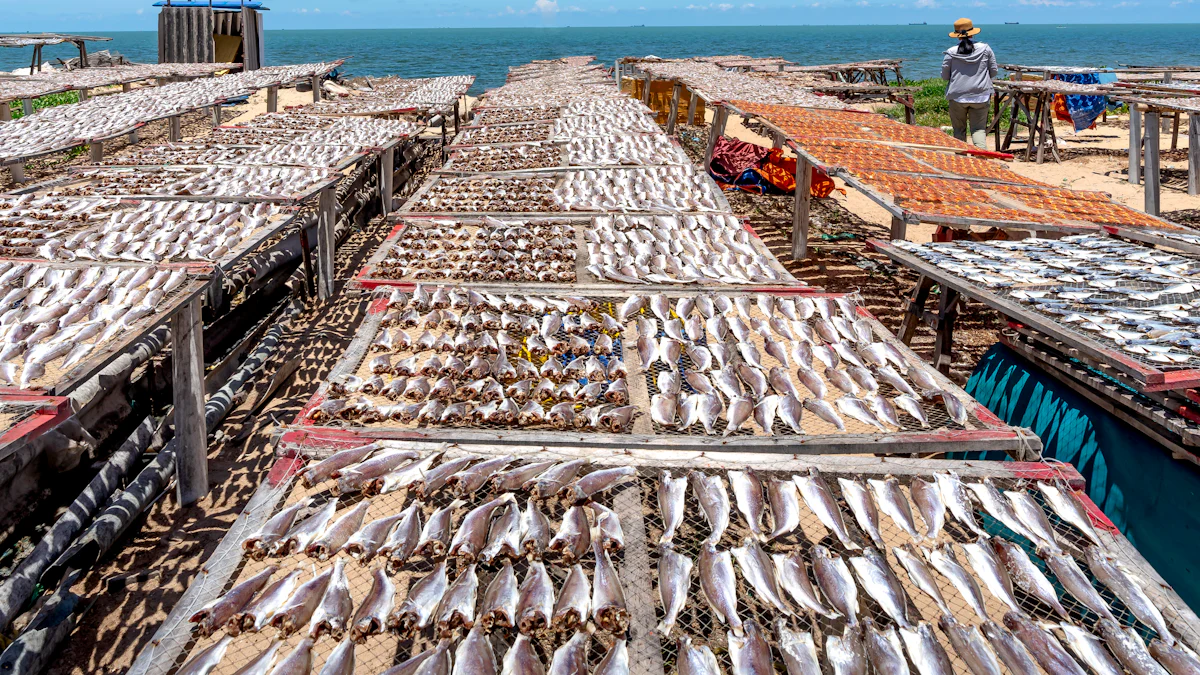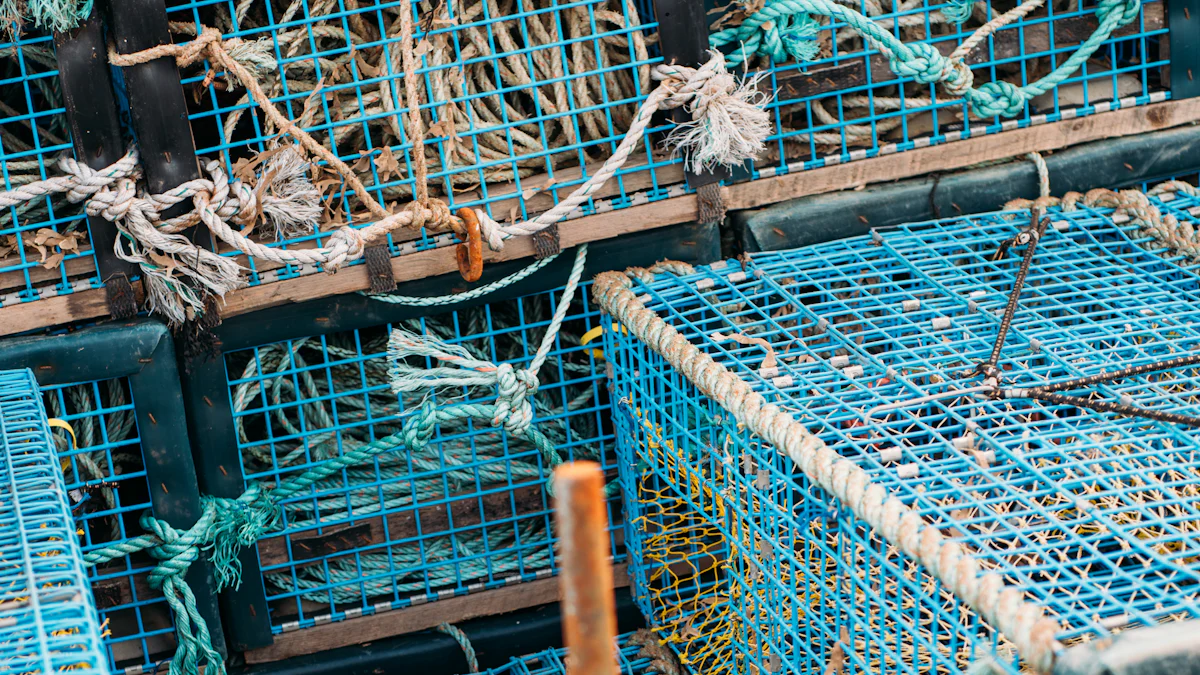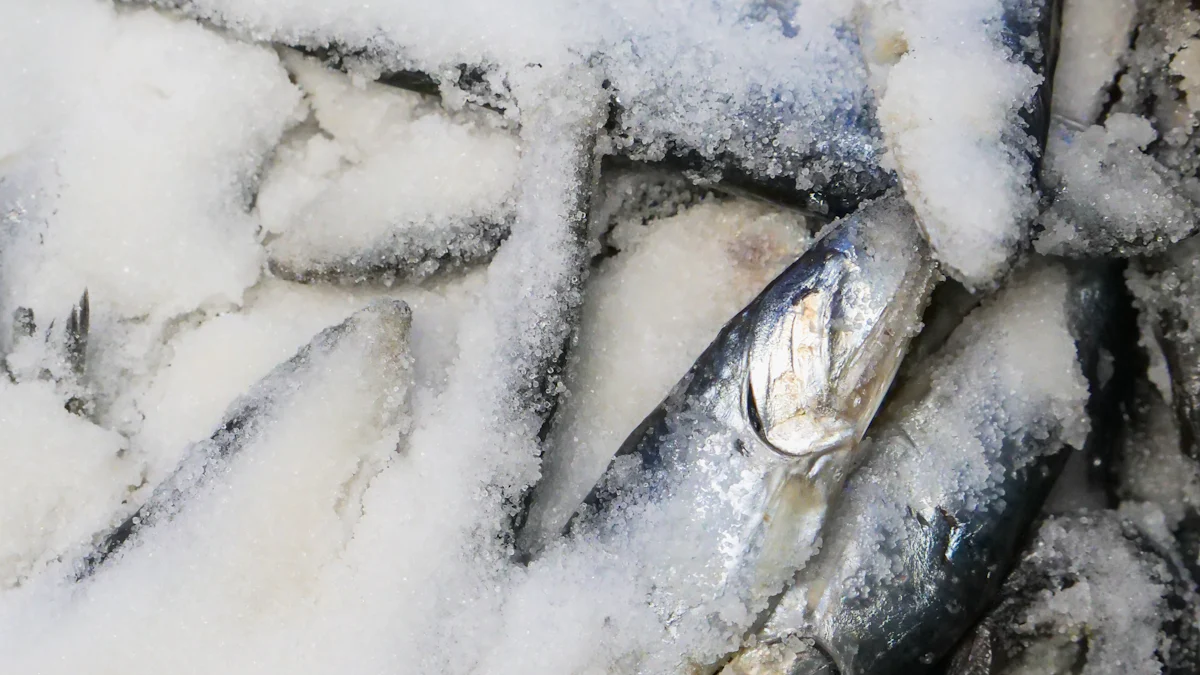What Are the Key Elements in Designing a Tuna Cold Room

Designing a Tuna Cold Room involves several critical elements that ensure optimal storage conditions. Temperature control stands as a primary factor, directly impacting the quality and safety of stored tuna. Insulation plays a vital role in maintaining consistent temperatures by reducing external heat intrusion. The layout must facilitate efficient storage and workflow, while equipment selection should focus on durability and energy efficiency. Lastly, adhering to regulatory compliance guarantees that the cold room meets necessary food safety and environmental standards. Each element contributes significantly to the effective preservation of tuna.
Temperature Control in Tuna Cold Room

Importance of Optimal Temperatures
Maintaining the right temperature in a Tuna Cold Room is crucial for preserving the quality and safety of tuna. Scientific Research Findings indicate that supercooling tuna significantly extends its freshness compared to conventional refrigeration. This method keeps the K-value, a measure of freshness, much lower, thus enhancing the shelf life of tuna.
Effects on Tuna Quality
Temperature directly affects the quality of tuna. When stored at optimal temperatures, tuna retains its texture and flavor. Supercooling, which involves storing tuna at temperatures just above freezing, helps maintain its freshness. This method prevents the growth of harmful bacteria like Salmonella, which can spoil the fish. However, if temperatures are too low, rapid chilling can lead to cold-shortening, causing the muscle to soften.
Health and Safety Considerations
Proper temperature control ensures the safety of tuna by inhibiting the growth of pathogens. While Salmonella growth is halted at low temperatures, Listeria monocytogenes can still multiply if the temperature is not adequately controlled. Therefore, maintaining a consistent temperature is vital for health and safety. You must ensure that the Tuna Cold Room operates within the recommended temperature range to prevent any health risks.
Systems for Temperature Regulation
To achieve optimal temperature control, you need reliable systems in place. These systems ensure that the Tuna Cold Room maintains the necessary conditions for preserving tuna quality.
Refrigeration units are the backbone of temperature regulation in a Tuna Cold Room. These units must be capable of reaching ultra-low temperatures, sometimes as low as -60°C, to store and freeze high-quality seafood effectively. Selecting the right Refrigeration units is essential for maintaining the desired temperature range and ensuring the longevity of the stored tuna.
Refrigeration units are the backbone of temperature regulation in a Tuna Cold Room. These units must be capable of reaching ultra-low temperatures, sometimes as low as -60°C, to store and freeze high-quality seafood effectively. Selecting the right refrigeration unit is essential for maintaining the desired temperature range and ensuring the longevity of the stored tuna.
Monitoring and Alarms
Continuous monitoring of temperature and humidity levels is crucial. Installing monitoring systems with alarms can alert you to any deviations from the optimal range. These systems help prevent temperature fluctuations that could compromise the quality and safety of the tuna. By integrating these technologies, you can ensure that the Tuna Cold Room consistently meets the required standards.
Insulation for Tuna Cold Room
Insulation plays a pivotal role in the design of a Tuna Cold Room. It ensures energy efficiency and maintains consistent temperatures, which are crucial for preserving tuna quality.
Role in Energy Efficiency
Insulation significantly contributes to energy efficiency by minimizing heat transfer. This reduces the workload on refrigeration units, leading to lower energy consumption.
Types of Insulation Materials
Several materials are available for insulating cold rooms. Polyurethane Insulation Panels are popular due to their low thermal conductivity and durability. They offer minimal moisture absorption and excellent impact resistance. PIR Panels, made with polyisocyanurate foaming, provide an environmentally friendly option with superior insulation properties. These materials are tailored to meet specific storage needs and space requirements.
Cost-Effectiveness
Investing in high-quality insulation materials can be cost-effective in the long run. Although the initial cost might be higher, the reduction in energy bills and maintenance costs offsets this. Efficient insulation reduces the frequency of refrigeration unit repairs and replacements, saving you money over time.
Maintaining Consistent Temperatures
Consistent temperatures are vital for maintaining the quality of stored tuna. Proper insulation helps achieve this by preventing external heat from entering the cold room.
Preventing Heat Transfer
Insulation acts as a barrier against heat transfer. By using materials like PUR spray foam, you can effectively seal gaps and prevent heat infiltration. This ensures that the cold room maintains the desired temperature range, safeguarding the tuna's freshness and quality.
Long-term Benefits
The benefits of proper insulation extend beyond immediate energy savings. Over time, well-insulated cold rooms experience fewer temperature fluctuations, reducing the risk of spoilage. This leads to better preservation of tuna, ensuring that it remains fresh and safe for consumption.
Layout and Design of Tuna Cold Room

Designing the layout of a Tuna Cold Room requires careful planning to ensure efficient storage and workflow. A well-organized space not only maximizes storage capacity but also enhances operational efficiency.
Efficient Storage Solutions
Maximizing Space
To make the most of your Tuna Cold Room, you should focus on maximizing space. Consider using vertical storage solutions, such as adjustable shelving units, to utilize the full height of the room. 304 stainless steel shelves are ideal for food storage due to their durability and resistance to corrosion. By organizing items based on size and weight, you can optimize the load-bearing capacity of each shelf. This approach ensures that you use every inch of available space effectively.
Accessibility
Accessibility is crucial for maintaining an efficient workflow. Arrange the storage layout so that frequently accessed items are within easy reach. This minimizes the time spent searching for products and reduces the need to open the cold room doors frequently, which helps maintain a stable internal temperature. Implementing a logical labeling system further enhances accessibility, allowing you to quickly locate and retrieve items.
Workflow Optimization
Movement of Goods
Optimizing the movement of goods within the Tuna Cold Room is essential for maintaining product quality and safety. Design the layout to facilitate a smooth flow of items from entry to storage and eventual dispatch. This involves creating clear pathways and minimizing obstacles that could hinder movement. By ensuring a seamless transfer process, you reduce the risk of damage to the tuna and maintain its freshness.
Safety Considerations
Safety should be a top priority in the design of your Tuna Cold Room. Implement measures to prevent accidents and ensure the well-being of personnel. This includes installing non-slip flooring to reduce the risk of falls and providing adequate lighting for visibility. Additionally, ensure that emergency exits are clearly marked and easily accessible. By prioritizing safety, you create a secure environment for both workers and stored products.
Equipment Selection for Tuna Cold Room
Selecting the right equipment for your Tuna Cold Room is crucial for maintaining optimal storage conditions and ensuring efficient operations. The equipment you choose should align with your specific storage needs and the available space.
Types of Equipment Needed
Shelving and Racking
Shelving and racking systems form the backbone of your storage solution. You should opt for durable materials like 304 stainless steel shelves. These shelves resist corrosion and withstand the cold room's harsh conditions. Adjustable shelving units allow you to maximize vertical space, accommodating various sizes and weights of tuna products. This flexibility ensures that you can organize your inventory efficiently, making the most of the available space.
Handling Equipment
Handling equipment is essential for the smooth movement of goods within the cold room. Consider investing in pallet jacks or forklifts designed for cold environments. These tools facilitate the easy transfer of heavy loads, reducing manual labor and minimizing the risk of damage to the tuna. Proper handling equipment not only enhances efficiency but also contributes to maintaining the quality of the stored products.
Considerations for Choosing Equipment
Durability and Maintenance
When selecting equipment, prioritize durability. Equipment in a Tuna Cold Room must endure low temperatures and constant use. Choose materials and designs that require minimal maintenance. This approach reduces downtime and ensures that your operations run smoothly. Regular maintenance checks can further extend the lifespan of your equipment, providing long-term reliability.
Energy Efficiency
Energy efficiency is a key consideration in equipment selection. Opt for energy-efficient models that consume less power while delivering optimal performance. This choice not only lowers your energy bills but also aligns with environmental standards. Look for equipment with energy-saving features, such as variable speed drives or energy-efficient motors. These features contribute to a sustainable operation, reducing your carbon footprint.
By carefully selecting the right equipment, you ensure that your Tuna Cold Room operates efficiently and effectively. This strategic approach supports the preservation of tuna quality and enhances overall productivity.
Regulatory Compliance in Tuna Cold Room
Ensuring regulatory compliance in a Tuna Cold Room is essential for maintaining food safety and environmental standards. You must adhere to specific regulations and standards to guarantee that your operations align with industry requirements.
Necessary Regulations and Standards
Food Safety Standards
Food safety standards are crucial in the design and operation of a Tuna Cold Room. The Hazard Analysis Critical Control Point (HACCP) system is a key component. This system requires you to identify potential hazards and implement control measures to prevent contamination. The FDA enforces the Seafood HACCP Regulation, which became effective on December 18, 1997. By following these guidelines, you ensure that your cold room meets the necessary food safety requirements.
Environmental Regulations
Environmental regulations also play a significant role in the operation of a Tuna Cold Room. You need to comply with standards that minimize the environmental impact of your facility. This includes managing energy consumption and waste disposal. Implementing energy-efficient practices and using environmentally friendly materials can help you meet these regulations. By doing so, you contribute to sustainable operations and reduce your carbon footprint.
Ensuring Compliance
Regular Inspections
Regular inspections are vital for maintaining compliance with food safety and environmental standards. You should conduct routine checks to ensure that all systems and processes meet the required regulations. These inspections help identify potential issues before they become significant problems. By staying proactive, you can address any non-compliance promptly and maintain the integrity of your Tuna Cold Room.
Documentation and Record-Keeping
Proper documentation and record-keeping are essential for demonstrating compliance. You must maintain detailed records of all inspections, maintenance activities, and any corrective actions taken. This documentation serves as evidence that your Tuna Cold Room adheres to the necessary standards. Keeping accurate records also facilitates audits and inspections by regulatory bodies, ensuring a smooth compliance process.
By understanding and implementing these regulatory requirements, you ensure that your Tuna Cold Room operates safely and efficiently. This commitment to compliance not only protects the quality of your stored tuna but also upholds your reputation in the industry.
In designing a tuna cold room, you must consider several key elements to ensure optimal storage conditions. Each component plays a crucial role in preserving tuna quality.
Temperature Control: Maintaining the right temperature prevents spoilage and ensures safety.
Insulation: Proper insulation reduces energy consumption and maintains consistent temperatures.
Layout and Design: A well-organized space maximizes storage and enhances workflow efficiency.
Equipment Selection: Choose durable and energy-efficient equipment for long-term reliability.
Regulatory Compliance: Adhering to standards guarantees food safety and environmental responsibility.
By focusing on these elements, you can create a cold room that effectively preserves tuna and supports efficient operations.
See Also
Unique Characteristics of Cold and Freezer Storage Areas
Essential Advice for Managing Cold Room Temperatures
Steps to Create a Functional Slaughter Cold Room

